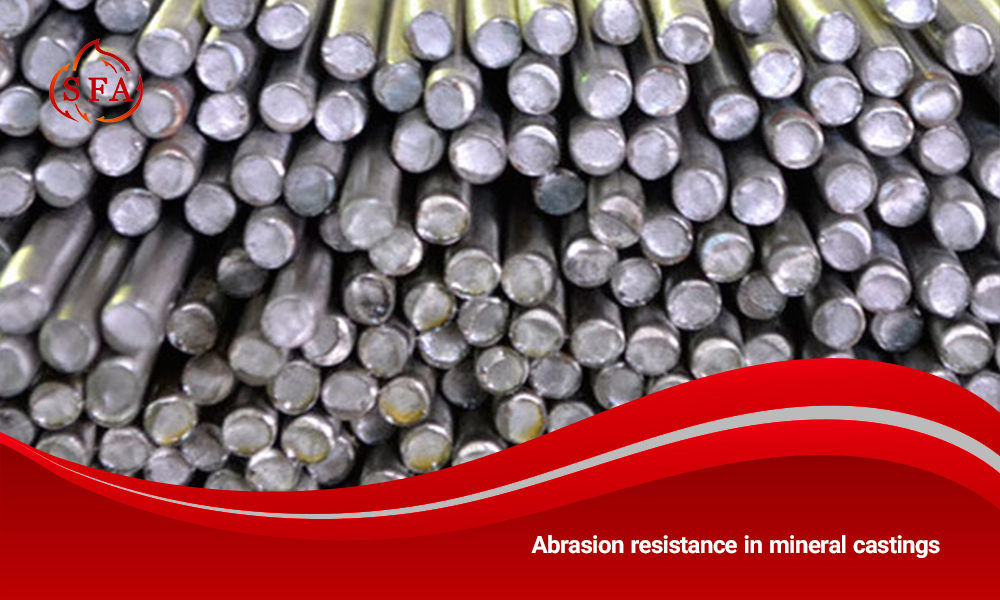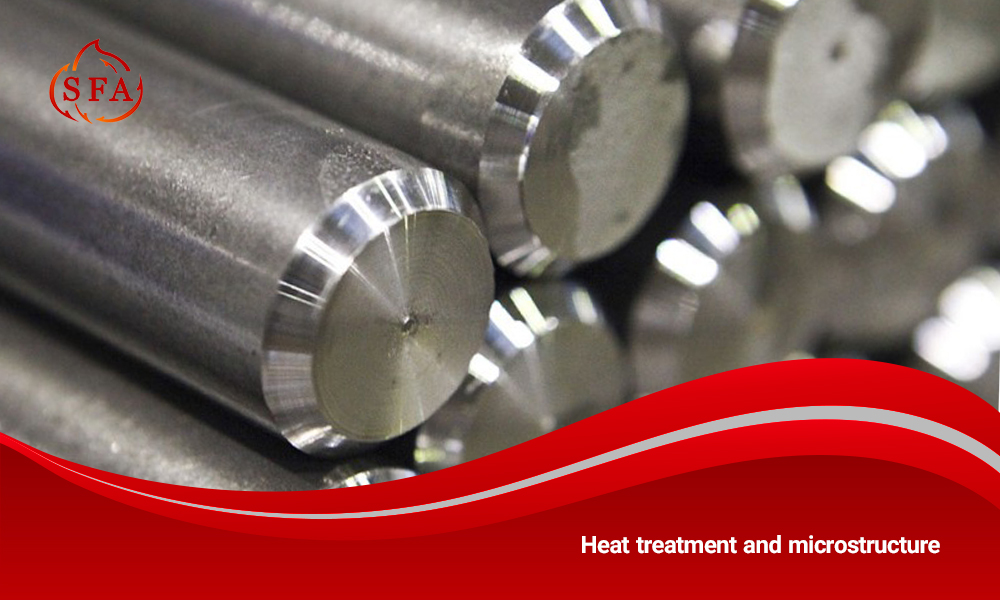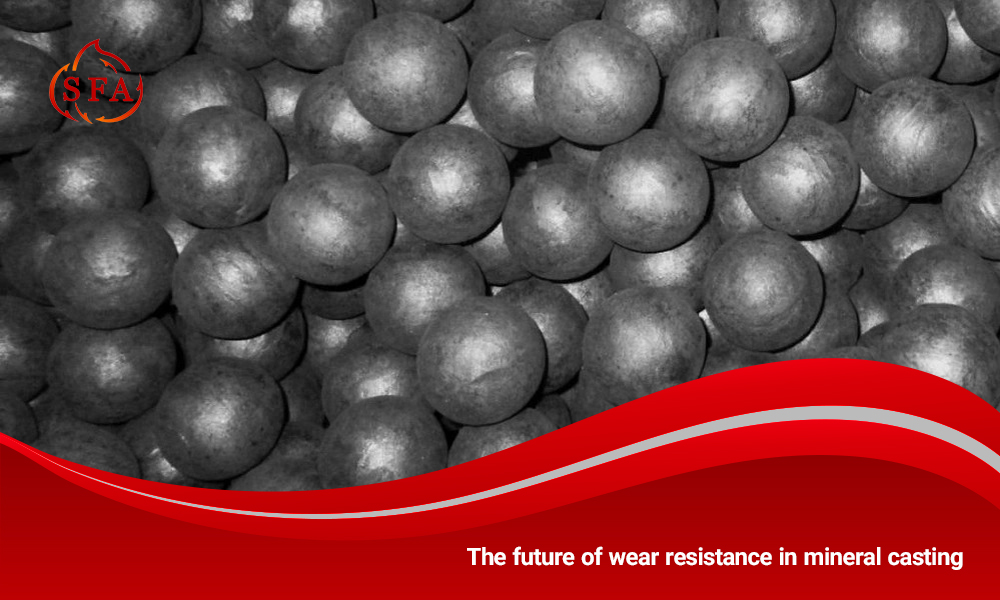

The Science Behind Abrasion resistance in mineral castings
Mining industries are one of the main pillars of the world’s industrial development. Extraction, crushing, transportation and processing of minerals all require equipment that is resistant to wear and impact. Among them, mining castings, including rock breaker hammers, bushings, liners, wear plates and blades, play a key role in increasing productivity and reducing maintenance costs.
One of the most important features of these parts is wear resistance, which is directly related to the lifespan, efficiency and operating costs.
In this scientific article from Sepahan Foolad Atashgah, we will examine in detail The Science Behind Wear Resistance in Mining Castings and analyze the key concept of Abrasion resistance in mineral castings.
The concept of wear and its importance in the mining industry
Abrasion is the process by which the surface of a material is destroyed by contact with harder materials or continuous friction. In mines, rocks and minerals cause severe wear of parts due to their high hardness.
• Types of wear in mines:
Abrasive Wear: Materials erode due to friction with hard particles.
Impact Wear: Surfaces degrade when subjected to repeated shocks.
Adhesive Wear: Parts experience material transfer under high pressure and contact.
Corrosive Wear: Metals deteriorate due to chemical reactions with the environment.
Of these, abrasive wear plays the largest role in the destruction of mining equipment, which doubles the need to increase Abrasion resistance in mineral castings.
Chemical composition and its role in wear resistance
One of the key factors in increasing wear resistance is the careful design of the chemical composition of the alloys used.
High Chromium Cast Iron: These alloys offer high abrasion resistance due to the presence of hard M7C3 carbides.
Manganese Steels (Hadfield Steel): These steels exhibit work-hardening properties and become harder under load.
Wear-resistant Alloy Steels: The combination of elements such as molybdenum, nickel, and vanadium enhances hardness and extends working life.
Research shows that Abrasion resistance in mineral castings is directly related to the percentage of carbon, chromium and manganese.
Heat treatment and microstructure
Heat treatment is another key tool for improving abrasion resistance in mineral castings.
Quenching and tempering: This process increases hardness and improves toughness.
Austenitizing: It enhances carbide distribution within the alloy.
Normalizing: This treatment optimizes the grain structure for better performance.
Distribution of carbides in the metal matrix increases abrasion resistance in mineral castings and can extend the life of parts by several times.


Metallurgical and structural design
Proper design of mineral castings does not end with alloy selection. Metallurgical engineering and structure control include:
Proper grain size selection: This ensures optimal hardness and wear resistance.
Control of carbide distribution: Proper distribution enhances abrasion resistance.
Prevention of thermal cracking: Measures help maintain material integrity under high temperatures.
Use of metal-ceramic composites: These composites combine strength and durability for anti-wear applications.
These structural designs maximize abrasion resistance in mineral castings in harsh mining conditions.
Click to read the article «What makes a ball mill grinder more efficient?».
The effect of working conditions on wear resistance
Environmental factors and operating conditions in mines also affect abrasion resistance:
Moisture and corrosion: These factors reduce the metal’s resistance to abrasion.
High impact loads: Manganese steel liners perform better under such conditions.
Operating temperature: Some alloys lose their anti-wear properties at high temperatures.
Based on research, proper selection of the part according to the operating conditions has a direct impact on increasing Abrasion resistance in mineral castings.
New solutions to increase wear resistance
Today, several modern methods are used to increase the life of mineral castings:
Surface Coating:
- Apply methods such as HVOF and Thermal Spray to create anti-wear coatings.
Hardfacing:
Use hardfacing techniques to enhance surface durability and reduce wear.
Layering of high-carbon or high-chromium alloys on the surface of the part.
Nanostructures and new materials:
- Apply nanometer carbides to enhance abrasion resistance in mineral castings.
Composite materials:
Combine metals and ceramics (Metal Matrix Composites) to create the next generation of anti-wear parts.
Economic and industrial benefits
Increasing abrasion resistance in mineral castings is not just a technical issue, but also has major economic impacts:
Helps reduce production line downtime
Lowers maintenance costs
Extends equipment life
Decreases energy consumption in mining processes
For this reason, investing in improving Abrasion resistance in mineral castings directly increases the profitability of mines.
Case Studies
In an Australian iron ore mine, changing the material of mill liners from conventional steel to high-chromium cast iron increased life from 6 months to 18 months. In a copper mine in Chile, replacing bronze bushings with wear-resistant alloy steels reduced maintenance costs by 30%. These studies show that the science behind Wear Resistance in Mining Castings directly translates into improved mine productivity.
The future of wear resistance in mineral casting
As materials science advances, the future of industry is shifting towards smart alloys and advanced composites. Research into nanocomposites, metal ceramics, and self-healing alloys promises to dramatically increase Abrasion resistance in mineral castings.


Introduction and sales guide of Sepahan Foolad Atashgah
Sepahan Foolad Atashgah Company is one of the leading manufacturers in the field of casting and manufacturing of wear-resistant industrial and mining parts in Iran. This complex, by utilizing up-to-date technical knowledge, advanced equipment and a team of experts, has been able to gain a special position in the market of anti-wear parts and mining castings. The company’s products include mill liners, rock breaker hammers, bushings, anti-wear plates and various customized parts for the mining, cement, steel and power plant industries.
The sales guide at Sepahan Foolad Atashgah is designed in such a way that customers can choose the most suitable alloy and part according to their needs. The company’s sales and engineering experts, CEO, offer specialized advice on alloy selection, part design and operating conditions, and suggest the best solution to increase the useful life of equipment and reduce maintenance costs.
By purchasing from Sepahan Foolad Atashgah, customers will not only receive a high-quality and durable product, but also enjoy reliable after-sales service and professional technical support.
Conclusion
Abrasion resistance is one of the most key parameters in the design and production of mineral castings. From chemical composition and heat treatment to microstructural design and surface coating, all play a role in improving Wear Resistance. Considering the high costs of repair and production stoppage in mines, focusing on Abrasion resistance in mineral castings is not only a scientific necessity but also an economic strategy.


